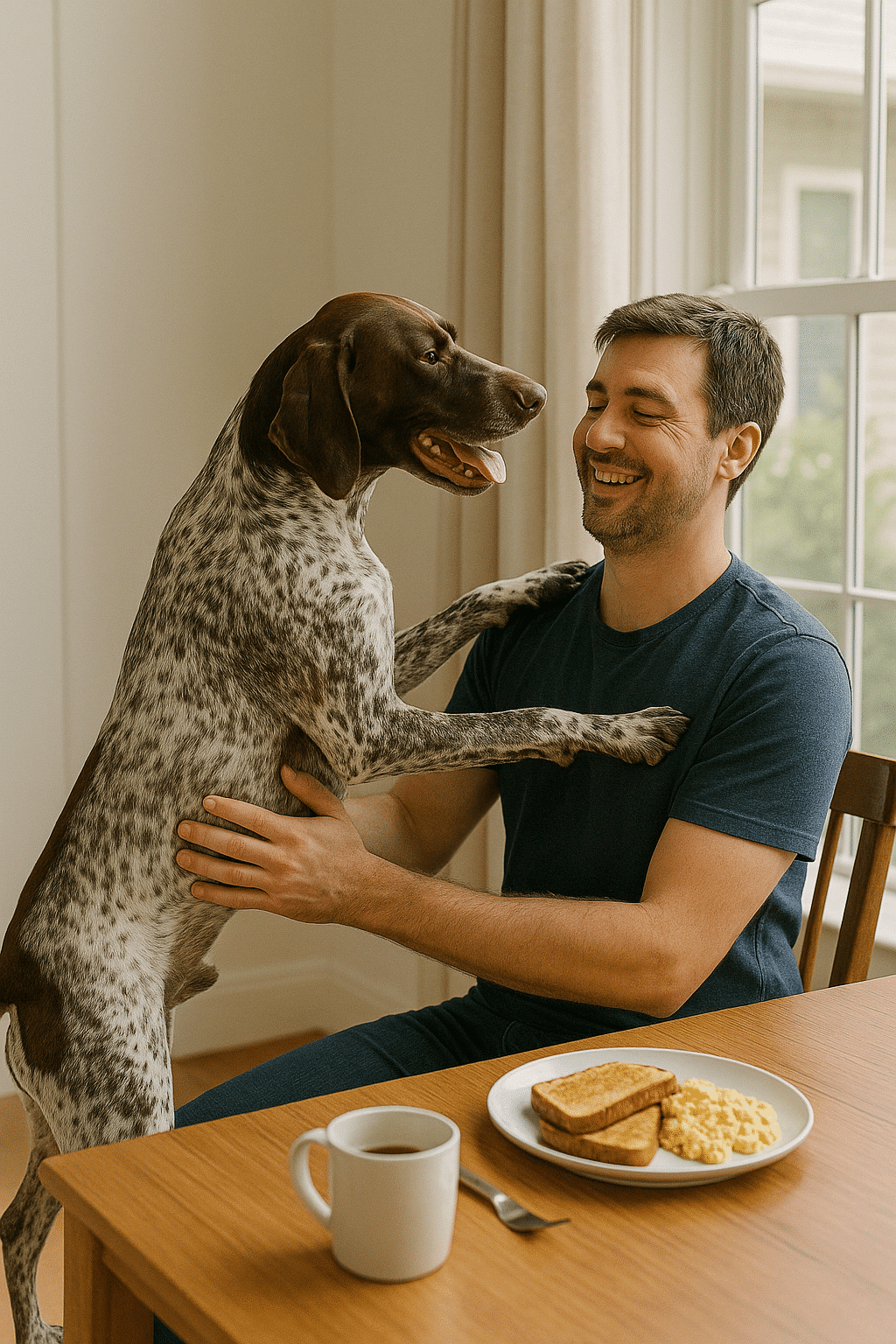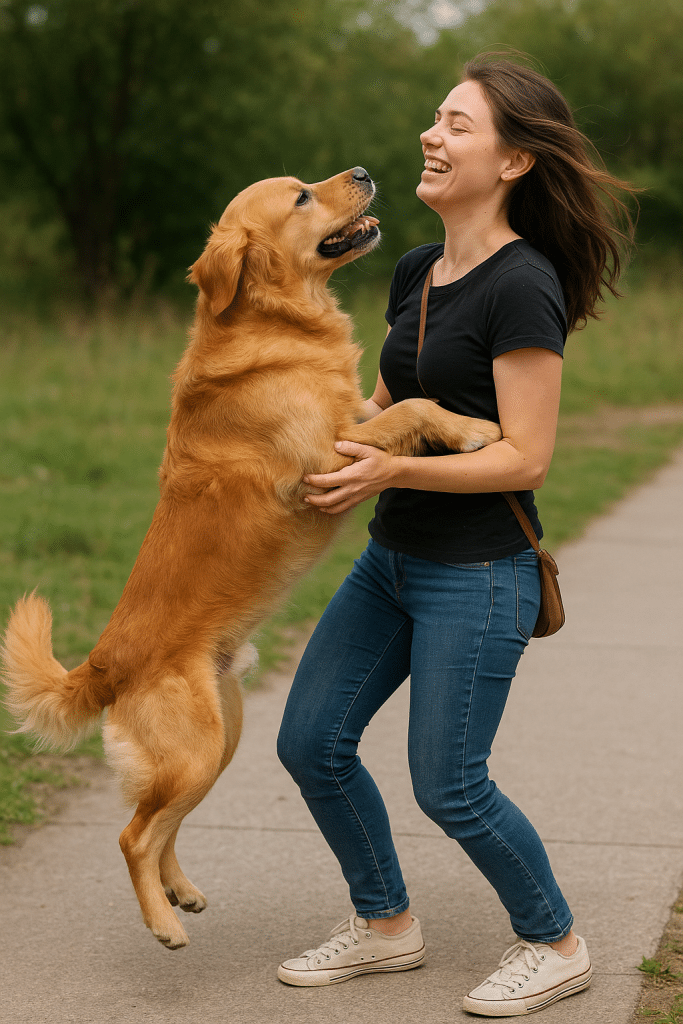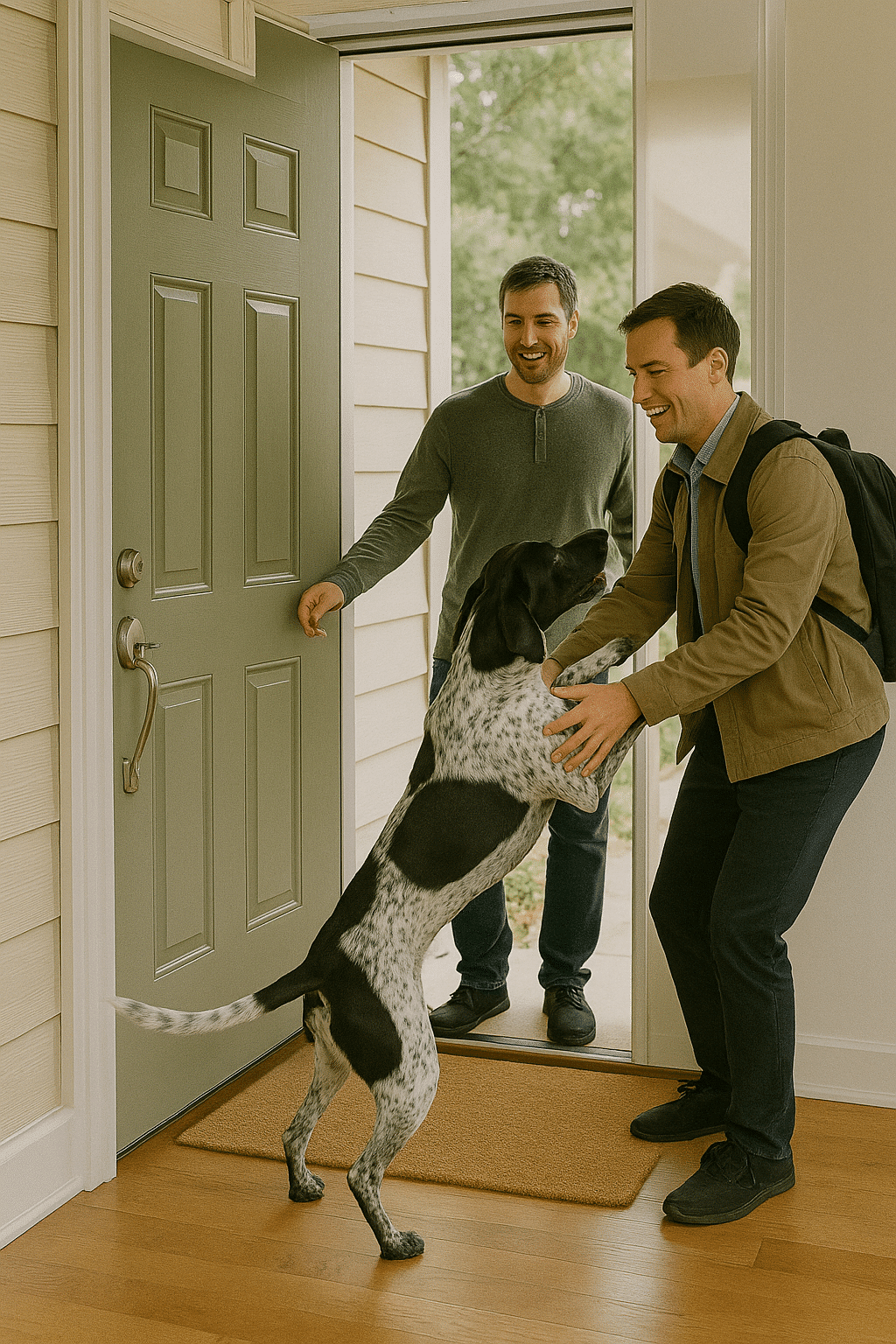Tired of Being Jumped On? A Step-by-Step Plan to Calm Your Canine's Greetings
Why Dogs Jump: Understanding the Root Cause
Before you can effectively address the jumping, it's essential to understand why dogs do it in the first place. Jumping is often a learned behavior, stemming from a few key motivations:
- Attention-Seeking: Puppies often jump on their mothers to solicit attention. This behavior can persist into adulthood if it's inadvertently rewarded with petting, talking, or even scolding (any attention is attention!).
- Excitement: Dogs jump when they're excited, whether it's seeing a long-lost friend or anticipating a walk. This boundless enthusiasm translates into vertical leaps.
- Dominance (Myth vs. Reality): While outdated theories suggested jumping was an attempt to establish dominance, modern behavioral science recognizes it's primarily related to attention and excitement.
- Habit: If a dog has been allowed to jump for a long time, it becomes ingrained as their go-to greeting.
Knowing the why behind the jump helps you tailor your training approach for maximum effectiveness. Also, check this article out about Decode the Bark: Is Your Dog Trying to Tell You Something?
Is Ignoring Jumping Effective? (And How to Do It Right)
Ignoring the jump is a cornerstone of many training plans, but it's crucial to implement it correctly. The goal is to remove the reward (attention) that the dog is seeking.
- The Turn-Away Technique: When your dog jumps, immediately turn your back, cross your arms, and avoid eye contact. Don't speak or touch the dog.
- Consistency is Key: Everyone who interacts with your dog must follow this rule, every single time. Inconsistency will confuse the dog and reinforce the jumping behavior.
- Wait for Calm: Only turn back and give attention (praise, petting) when all four paws are on the floor. Even a brief, accidental touch while jumping can be a reward.
- The Danger of Punishing with Attention: Yelling no or pushing the dog down can inadvertently reinforce the behavior. The dog received attention, even if it was negative.
Be prepared for the extinction burst. The behavior might initially get worse before it gets better, as the dog tries harder to get your attention. Stay consistent, and they will eventually learn that jumping doesn't work.
Teaching an Alternative Behavior: Sit, Down, or Target Training
Ignoring the jump is only half the battle. You need to teach your dog what *todo instead. An alternative behavior gives them a positive outlet for their excitement.
- Sit as the Default Greeting: Teach your dog to sit reliably on command. Practice frequently in various locations and with different distractions.
- Down for Advanced Calmness: Down is even more calming than sit. If your dog knows the down command, use it as an alternative greeting, especially with more excitable visitors.
- Target Training (Nose to Hand): Target training involves teaching your dog to touch their nose to your hand. This can be used to redirect their attention away from jumping and towards a specific task.
When someone approaches, give the command (sit or down) *before the dog has a chance to jump. Reward the desired behavior with praise, a treat, or a toy. Timing is crucial – reward immediately after the desired behavior occurs.
Management Strategies: Preventing Opportunities for Jumping
Prevention is better than cure. Managing the environment to minimize opportunities for jumping can accelerate the training process.
- Leash Control: When greeting people on walks, keep your dog on a leash and maintain control. Step on the leash (carefully!) to prevent jumping.
- Crates or Designated Areas: For extremely excitable dogs, consider putting them in a crate or behind a baby gate when guests arrive. This gives them a chance to calm down before being introduced.
- Pre-Greeting Exercise: A tired dog is a well-behaved dog. Take your dog for a brisk walk or play session before visitors arrive to burn off excess energy.
These management techniques aren't a substitute for training, but they can significantly reduce jumping incidents while your dog is learning.
Dealing with Excitement: Calming Techniques for Hyper Dogs
Some dogs are naturally more excitable than others. Incorporating calming techniques into your daily routine can help manage their overall energy levels.
- Consistent Routine: Dogs thrive on routine. Predictable feeding, walking, and playtime schedules can reduce anxiety and excitability.
- Mental Stimulation: Puzzle toys, training sessions, and scent work can provide mental stimulation that tires the dog out in a positive way.
- Calming Aids: Consider using calming pheromone diffusers or supplements (with veterinary approval) to help reduce anxiety.
- Massage and Gentle Petting: Practicing gentle petting and massage can help calm your dog's nerves.
A calmer dog is less likely to jump in the first place.
Training in Stages: From Quiet Environments to High-Traffic Areas
Don't expect your dog to perform perfectly in a chaotic environment right away. Training should progress gradually, starting in a quiet, distraction-free setting.
- Stage 1: Quiet Home Environment: Practice the sit or down command in a quiet room with no distractions.
- Stage 2: Increasing Distractions: Gradually introduce distractions, such as toys, sounds, or family members moving around.
- Stage 3: New Locations: Practice in different rooms of the house, then the backyard, and eventually in public places (on leash).
- Stage 4: Simulated Greetings: Have a friend or family member pretend to be a visitor. Practice the greeting routine in a controlled environment.
Move at your dog's pace. If they struggle at a particular stage, go back to the previous one and reinforce the training.

How to Train Visitors: Enlisting Help from Friends and Family
Consistency is paramount. To truly eliminate jumping, you need the cooperation of everyone who interacts with your dog.
"Unlock the Secrets to a Blissful, Healthier Puppy: Discover the Benefits of Holistic Housebreaking"
- Educate Your Guests: Explain your training plan to visitors and ask them to follow your instructions.
- The No Attention Until Calm Rule: Instruct guests to completely ignore the dog until all four paws are on the floor.
- Treats on Hand: Provide visitors with treats so they can reward the dog for appropriate behavior (sitting or lying down).
- Be Prepared to Intervene: If a guest is struggling to follow the plan, be ready to politely intervene and redirect the dog.
Some visitors may be hesitant, but emphasize the importance of consistency for the dog's training.
What Not to Do: Common Mistakes When Addressing Jumping
Even with good intentions, some approaches can inadvertently reinforce jumping behavior.
- Giving in Just This Once: Allowing jumping even occasionally reinforces the behavior. Consistency is vital.
- Punishing the Dog After the Fact: Punishing a dog for jumping after the event is ineffective. They won't connect the punishment with the action.
- Inconsistent Commands: Using different commands for the same behavior (sit, sit down) can confuse the dog.
- Yelling or Pushing the Dog: These actions often provide the attention the dog is seeking, inadvertently rewarding the jumping.
Be mindful of these common mistakes and stick to your training plan.
When to Seek Professional Help: Consulting a Trainer or Behaviorist
If you're struggling to make progress on your own, don't hesitate to seek professional guidance.
- Persistent Jumping: If the jumping persists despite consistent training efforts.
- Aggressive Jumping: If the jumping is aggressive or accompanied by growling or snapping.
- Anxiety-Related Jumping: If the jumping is related to underlying anxiety or fear issues.
- Multiple Behavioral Issues: If you're dealing with multiple behavioral problems.
A certified professional trainer or veterinary behaviorist can assess your dog's specific needs and develop a tailored training plan.
Check this other article out! Is Your Dog Ignoring You? Simple Fixes for Common Obedience Problems
Addressing Jumping in Specific Scenarios: Leash Greetings, Children, Senior Citizens
Different situations require slightly different approaches.
- Leash Greetings: Keep your dog on a short leash and step on it to prevent jumping. Teach them to sit or stay while the other person approaches.
- Children: Supervise interactions between dogs and children closely. Teach children how to properly greet a dog (standing still, offering a closed hand). If the dog jumps towards a child, calmly remove the child from the situation.
- Senior Citizens: Jumping can be especially dangerous for senior citizens. Ensure your dog is well-controlled and consider using a leash even indoors when seniors are present.
Adapting your training to specific scenarios can make it more effective.


